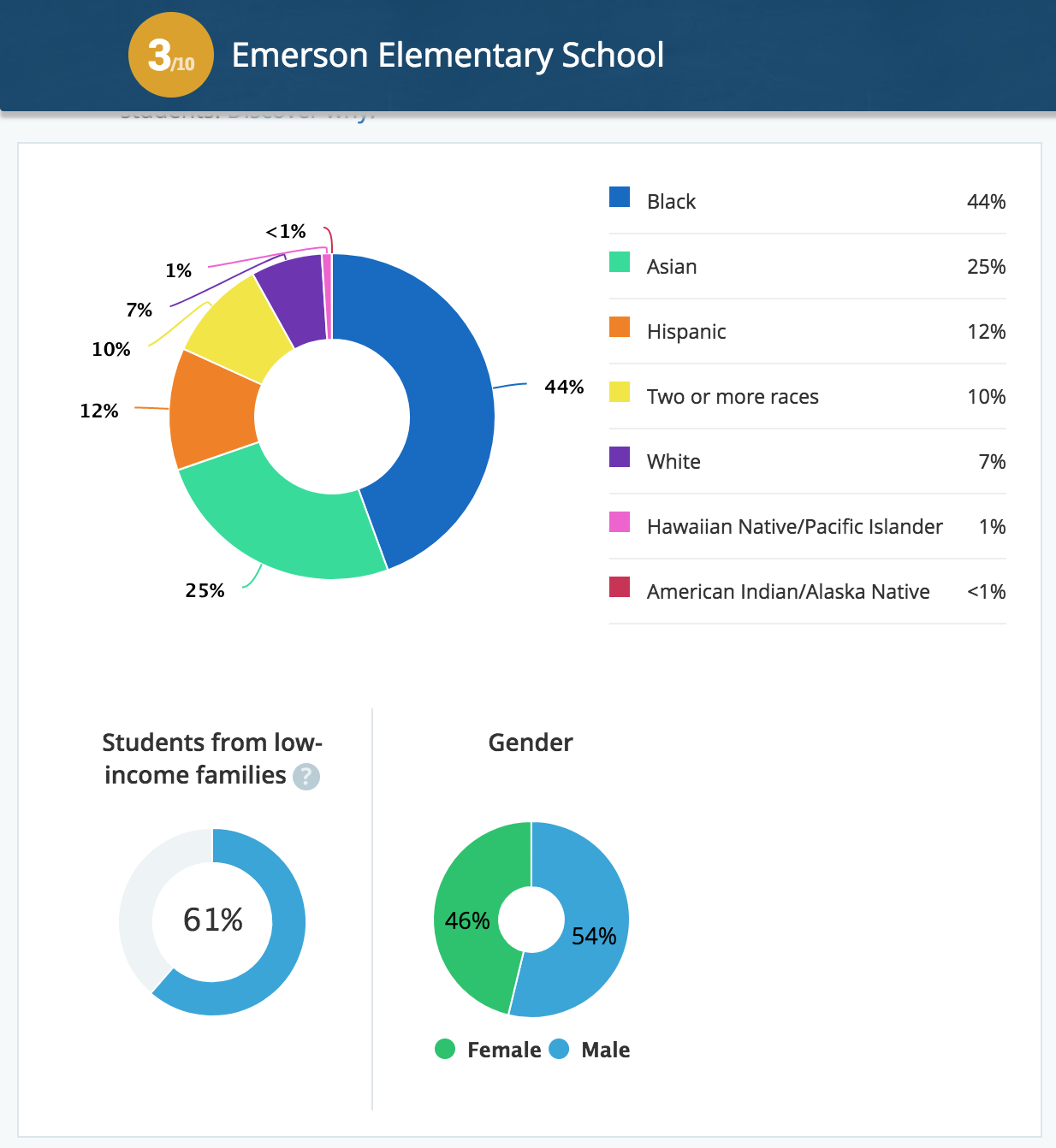How do we know if a school is 'good' or 'bad'?
/How do we know if a school is good or bad?
It seems like a pretty simple question.
But what’s the answer?
We could say it’s about test scores and academics, but we know that doesn’t paint the full picture.
Maybe it’s just common knowledge. Think of your own city. You know what neighborhoods have the best schools in town, right? You know where to find the bad schools — at least roughly. You know what is and isn’t acceptable for the children you love. Right?
Maybe. But where did those stereotypes come from? How do we know?
Well, let’s ask our phones. Google. Let’s use Emerson Elementary, my own family's neighborhood school in the south end of Seattle, as an example.
Great Schools gives Emerson a 3/10 ranking. Pretty bad.
They rate Emerson a 2/10 for test scores and a 5/10 for progress, but just a 1/10 for “equity” and for its success with low-income students.
“Test scores for low-income students at this school fall far below the state average for all students,” it says on the site under a heading that reads “very concerning.”
I have no doubt that’s true. But here’s the thing: Great Schools also still lists Marion Vinson as the principal. That information is beyond outdated. Not only is Vinson not the current principal at Emerson, we have had three principals at the school since she left! That kind of glaring error calls into obvious question the rest of the conclusions Great Schools is drawing about Emerson.
Under “Environment,” meanwhile, Great Schools talks about the racial breakdown of Emerson’s student body, acknowledging up front that “studies show that diversity in school leads to long-term benefits for students.”
Then we’re shown a snapshot of Emerson’s genuine diversity:
Of course, they don’t seem to give Emerson any credit in its ranking for the diversity of its students and staff.
We’re also, then, given three pieces information about Emerson’s teachers: the student/teacher ratio, the percentage of teachers with at least three years’ experience, and the percentage who are certified.
No mention, for instance, of teacher diversity.
And you know what? Emerson’s poorly informed ranking shows up prominently anytime someone views a house in our neighborhood on Zillow. Talk about a self-fulfilling prophecy. If parents already “know” a school is “bad” before they’ve even moved in, what will their perceptions be? Will they even consider sending their child to Emerson?
School Digger, meanwhile, ranks Emerson as a one-star school on a five-star scale. That puts it at 777th out of 1,059 elementary schools in the state of Washington.
These unsavory evaluations seem mostly based on test scores, as far as I can tell, though I can’t claim to understand how they distilled all the data into a single score, nor do I know what all ingredients they put in the soup.
Niche seems to take a slightly more favorable view of Emerson, giving it a C+ overall. Emerson also gets from Niche a C for academics, a B- for its teachers, and an A for diversity — and it actually lists Emerson as the 184th-most-diverse elementary school in Washington. (Here’s the full list. Pretty interesting.)
What does it all mean? How, as parents, are we supposed to know which of these statistics matter and which don’t? How do we know what a school is really like?
My son is in his fourth year at Emerson, and I can tell you from personal experience now that it takes time to get to know the truth about a school. And when principals and staff turn over as quickly and frequently as they have at Emerson, that difficulty is only magnified. Once you have a sense of how things are going, things change.
What do you look for in a school? What are the most important factors in choosing a neighborhood for your family or an academic home for your kids?
And when you have questions about a school, where do you turn for information? What questions do you ask? And who answers?








